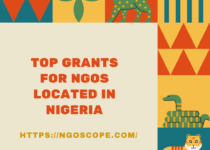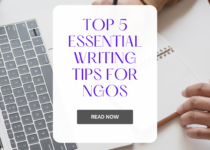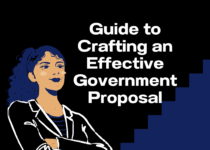10 Essential Dos and Don’ts of Proposal Writing: Master the Art of NGO Proposal Writing
Introduction: 10 Essential Dos and Don’ts of Proposal writing, in the intricate realm of nonprofit organizations, the ability to articulate a compelling proposal stands as a cornerstone for success. Crafting a proposal that not only captures the essence of an NGO’s mission but also resonates with diverse stakeholders requires a delicate balance of strategy and skill.
In this article, we unravel the art of NGO proposal writing, presenting a comprehensive guide of 10 essential dos and don’ts. Whether you’re a seasoned grant writer or a newcomer to the field, mastering these fundamental principles can significantly enhance your ability to communicate purpose, engage stakeholders, and ultimately make a lasting impact.
Join us as we navigate through the intricacies of effective proposal writing, equipping you with the insights to not only meet but exceed the expectations of funders, partners, and communities alike.
Significance of NGO proposal writing [10 Essential Dos and Don’ts of Proposal Writing]
In the fiercely competitive landscape of nonprofit funding, crafting an NGO proposal is akin to navigating turbulent waters. The ability to capture attention, communicate impact, and secure support is not just advantageous but an imperative art.
With countless organizations vying for a limited pool of resources, the first proposal submission often serves as the decisive moment. In this high-stakes environment, mastering the art of proposal writing is not merely a skill; it’s the linchpin that distinguishes success from obscurity.
NGOs must hone the ability to succinctly convey their mission, compelling funders to invest in their vision amidst the cacophony of compelling causes. In this critical dance for financial support, nailing the proposal on the first attempt is not a luxury but a strategic necessity for survival and meaningful impact.
Overview of key dos and don’ts [10 Essential Dos and Don’ts of Proposal Writing]
The overview of key dos and don’ts emphasizes crucial aspects of effective NGO proposal writing. Dos include aligning with the NGO’s mission, tailoring proposals to the audience, defining problems clearly, developing detailed action plans, and showcasing measurable outcomes.
On the flip side, don’ts involve avoiding ambiguity, overselling, using technical jargon, neglecting budget clarity, and overlooking stakeholder involvement. These guidelines form the foundation for crafting impactful proposals in a competitive funding landscape.
Growing competition in the grants world is making it harder for NGOs to secure grants, to ease the process.
We have compiled some battle tested Dos for NGOs that they must definitely focus on while writing a proposal so that they can nail the grants in the first attempt
Dos
[10 Essential Dos and Don’ts of Proposal Writing]
- Align with NGO’s mission
Aligning with the NGO’s mission is a fundamental “do” in proposal writing. This involves ensuring that every aspect of the proposal reflects and supports the organization’s overarching goals and objectives.
By demonstrating a clear connection between the proposed project and the mission of the NGO, the proposal gains credibility and resonates with stakeholders, showcasing a cohesive and purposeful approach. This alignment not only enhances the likelihood of securing funding but also reinforces the organization’s commitment to its core values and societal impact.
- Tailor to target audience
Tailoring the proposal to the target audience is a crucial “do” in effective NGO proposal writing. This involves customizing the language, tone, and content to resonate specifically with the individuals or organizations that the proposal aims to persuade.
Understanding the needs, interests, and priorities of the target audience allows the proposal to communicate its message more effectively, increasing the chances of engagement and support. By demonstrating a clear understanding of the audience’s perspective, the proposal becomes more compelling and relevant, fostering a stronger connection and alignment with the goals and values of the intended recipients.
- Clearly define the problem statement
Clearly defining the problem statement is a pivotal “do” in NGO proposal writing. This involves articulating the issue with precision and clarity, providing a comprehensive understanding of the challenges the proposed project aims to address.
By presenting a well-defined problem statement, the proposal establishes a compelling rationale for intervention and underscores the significance of the project. This clarity not only helps stakeholders grasp the urgency and importance of the initiative but also sets the stage for a focused and impactful solution.
A clearly defined problem statement serves as the foundation for the entire proposal, guiding the reader toward a thorough understanding of the societal need that the NGO seeks to alleviate.
[10 Essential Dos and Don’ts of Proposal Writing]
- Develop a detailed action plan
Developing a detailed action plan is a critical “do” in effective NGO proposal writing. This involves outlining step-by-step strategies and activities that the proposed project will undertake to address the identified problem.
A well-crafted action plan provides a roadmap for implementation, demonstrating a thorough understanding of the tasks, timelines, and resources required. This level of detail not only instills confidence in funders and stakeholders but also showcases the organization’s commitment to a well-thought-out and feasible approach.
A comprehensive action plan ensures transparency and accountability, reinforcing the proposal’s credibility and increasing the likelihood of securing support for the project.
- Showcase measurable outcomes
Showcasing measurable outcomes is a crucial “do” in NGO proposal writing. This involves clearly defining and presenting specific, achievable goals and outcomes that can be quantifiably assessed. By incorporating measurable indicators of success, the proposal provides a tangible framework for evaluating the impact of the proposed project. This not only enhances accountability but also instills confidence in stakeholders, demonstrating the organization’s commitment to delivering concrete and meaningful results.
Highlighting measurable outcomes ensures transparency and aligns with the expectations of funders, ultimately strengthening the proposal’s overall persuasiveness and increasing the likelihood of securing support for the initiative.
Of course there are pitfalls that NGOs must avoid to write a winning proposal, heed to the don’ts and you will be on safer side.
Don’ts
[10 Essential Dos and Don’ts of Proposal Writing]
- Avoid ambiguity
Avoiding ambiguity is a pivotal “don’ts” in NGO proposal writing. This entails steering clear of vague or unclear language that could introduce confusion or uncertainty. Ambiguity in a proposal can undermine the credibility of the organization and the proposed project, leaving stakeholders with unanswered questions and diminishing the overall impact of the document.
A clear and straightforward presentation of ideas ensures that the proposal is easily understood, fostering trust and confidence among funders and partners. By eliminating ambiguity, the proposal becomes a more persuasive and compelling tool in conveying the organization’s mission and the significance of the proposed initiative.
- Don’t oversell
“Don’t oversell” is a critical principle in NGO proposal writing. This cautions against presenting the project in an exaggerated or overly optimistic manner. Overselling can undermine the credibility of the proposal, leading to a lack of trust from potential funders and stakeholders.
It is essential to maintain transparency and provide a realistic assessment of what the organization can achieve. By avoiding hyperbole and focusing on genuine strengths and outcomes, the proposal stands a better chance of building trust and securing the necessary support for the project. A balanced and truthful approach contributes to a more persuasive and credible proposal in the competitive landscape of nonprofit funding.
[10 Essential Dos and Don’ts of Proposal Writing]
- Skip jargon and technical language
“Skip jargon and technical language” is a key “don’t” in NGO proposal writing. This emphasizes the importance of avoiding complex terminology or industry-specific language that may be unclear to the proposal’s diverse audience.
By using plain and accessible language, the proposal becomes more inclusive and easily understood by a broader range of stakeholders, including those who may not have specialized knowledge. Steering clear of jargon ensures that the message is effectively communicated, enhancing the proposal’s overall impact and resonance.
This practice contributes to a more transparent and engaging proposal that can captivate a wider audience, increasing the likelihood of successful communication and support for the NGO’s mission.
- Don’t neglect budget clarity
“Don’t neglect budget clarity” is a crucial principle in NGO proposal writing. This underscores the importance of providing a transparent, detailed, and well-organized budget for the proposed project. Neglecting budget clarity can lead to misunderstandings, erode trust, and hinder the proposal’s effectiveness.
A clear budget demonstrates accountability, showing how funds will be allocated and utilized to achieve the stated goals. Avoiding vague or ambiguous financial information is essential for building confidence among funders and stakeholders.
By meticulously outlining the budget, the proposal becomes a more convincing and reliable document, increasing the likelihood of securing the necessary financial support for the NGO’s initiatives.
- Resist neglecting stakeholder involvement
“Resist neglecting stakeholder involvement” is a critical guideline in NGO proposal writing. This highlights the importance of acknowledging and involving key stakeholders throughout the proposal process.
Neglecting stakeholder involvement can lead to a lack of support, as it may appear that their perspectives, needs, or contributions are disregarded. Actively engaging and considering the input of various stakeholders, including the community and other partners, strengthens the proposal by demonstrating a collaborative and inclusive approach.
By recognizing the importance of stakeholders, the proposal becomes more relevant, responsive, and aligned with the broader community, increasing the chances of securing support and ensuring the sustainability of the proposed project.
[10 Essential Dos and Don’ts of Proposal Writing]
In the challenging landscape of NGO proposal writing, these dos and don’ts serve as guiding beacons, illuminating the path to success in securing vital support for impactful initiatives. By aligning with an organization’s mission, tailoring proposals to resonate with diverse audiences, and embracing transparency and accountability, NGOs can elevate their proposals to stand out in the competitive realm of funding.
As we conclude, remember that the art of proposal writing is not just about words on paper; it’s a testament to an organization’s commitment, integrity, and vision. By mastering these essential principles, NGOs can navigate the challenges, amplify their impact, and forge a path toward a future enriched by meaningful change and sustainable success.
Related Good Reads, Link
Hey, STEAL our Best Premium Content For Absolutely Free, Check Out the Links below
HOPE these will add value to your existing skills and knowledge
Our information bears no cost (it’s absolutely FREE), don’t let valuable information slip away.
Join our community of avid readers who are always in the know. Subscribe to our website; stay connected and engaged with the latest news, trends, and developments by subscribing today.
(PUSH the bell ICON)
Leverage the power of knowledge to propel your organization to new heights. Don’t miss out to explore our content
- Latest Funds for NGOs,
- NGO Jobs
- Resources (Helpful Guides and Courses)
- Premium Resources
- NGO related articles
Empowering Humanity through Funds, Resources and Collective Action
Sharing is Appreciated



